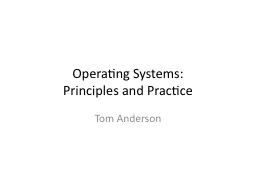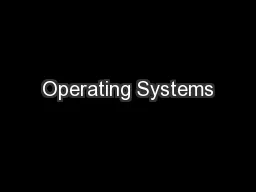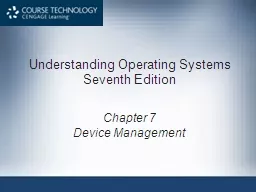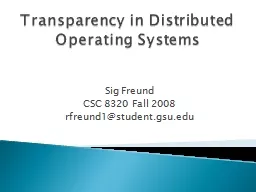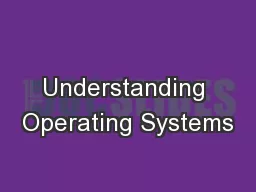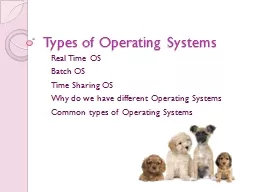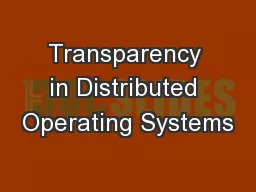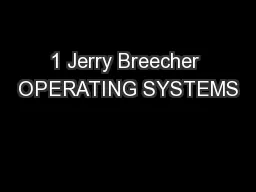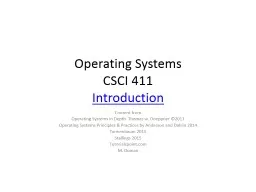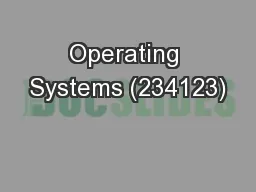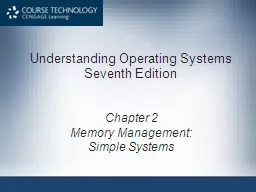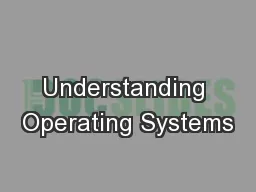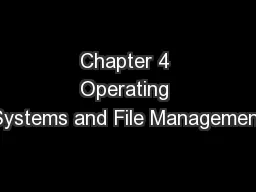PPT-Operating Systems (234123)
Author : conchita-marotz | Published Date : 2016-03-15
Spring 2013 Deadlocks Dan Tsafrir 1352013 Partially based on slides by Hagit Attiya OS 234123 spring 2013 deadlocks 1 Text OS notes book Much of the material
Presentation Embed Code
Download Presentation
Download Presentation The PPT/PDF document "Operating Systems (234123)" is the property of its rightful owner. Permission is granted to download and print the materials on this website for personal, non-commercial use only, and to display it on your personal computer provided you do not modify the materials and that you retain all copyright notices contained in the materials. By downloading content from our website, you accept the terms of this agreement.
Operating Systems (234123): Transcript
Download Rules Of Document
"Operating Systems (234123)"The content belongs to its owner. You may download and print it for personal use, without modification, and keep all copyright notices. By downloading, you agree to these terms.
Related Documents


